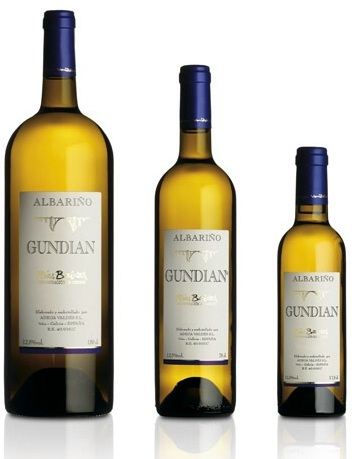Albariño wine hails from the Rias Baixas region in Galicia in the northwest of Spain, just above Portugal. This region produces some of the most exceptional white wines of today, and it is lush and verdant.
 Albariño is often likened to Riesling for its minerally qualities, and many wine experts argue that the two are in fact the same grapes, with the theory being that Riesling was brought to the area by German monks who were at the time establishing monasteries. The regulatory council of Rias Baixas disagrees with this theory however, insisting that the grape is indigenous to Spain. The wine is also similar to Viognier due to its aromatic qualities of peach and apricot.
Albariño is often likened to Riesling for its minerally qualities, and many wine experts argue that the two are in fact the same grapes, with the theory being that Riesling was brought to the area by German monks who were at the time establishing monasteries. The regulatory council of Rias Baixas disagrees with this theory however, insisting that the grape is indigenous to Spain. The wine is also similar to Viognier due to its aromatic qualities of peach and apricot.
Albariño is relatively new in terms of Spanish wine, having taken off in the late eighties. It became a very fashionable wine to drink in Madrid at the time and was expensive until further vineyards were opened and prices were reduced. It's still not cheap, and is unlikely to ever be cheap, due to the ripening challenges faced in the region.
Pairing with food
The climate of Galicia is damp and cool compared with the rest of Spain and this means that there are difficulties to be faced in terms of getting the grapes to ripen. This does however allow the wine to hold a delicious acidity, which means it goes very well as an accompaniment to fish and seafood.
Pair the wine with Antipasto, smoked fish or shellfish, backed goats cheese, chicken pate, Bouillabaisse, fish stew in general and brie and camembert.
These foods are widely accepted as good pairings but are by no means exhaustive. Don't be afraid to make up your own rules either; drinking this wine with food is for your own enjoyment and so do not be put off by wine snobs who look down on making unconventional wine/food pairings!
Good wine is also very enjoyable when drunk by itself.
Characteristics
This wine is a pale white with hints of green in it. It is medium-bodied and has a peachy aroma with a firm freshness. Albariño is best drunk very cold and while it is still young.
Other uses
The grape is often used in Portugal, where it is known as Alvarinho, as an ingredient in Vinho Verde, for which the Portuguese blend it with the Loureiro grape. Some good quality bottles of Vinho Verde have been produced in the last few years, and they boast a bright acidity and zesty grapefruity character.